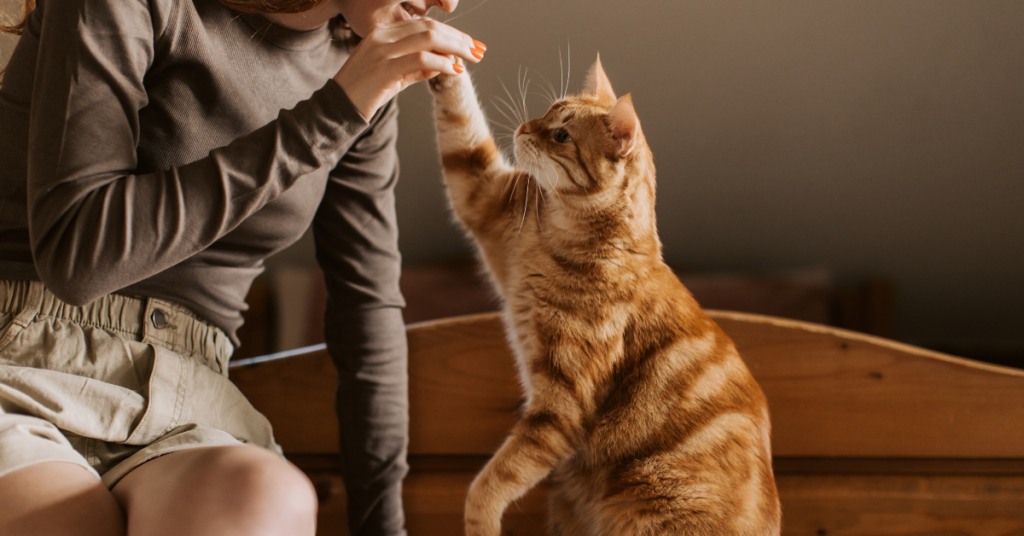Feeding a cat properly means more than just filling a bowl. From texture and flavour to ingredients and feeding schedules, every choice matters. Whether you’re caring for a kitten, a senior cat, or anything in between, making informed decisions about food will help keep your feline healthy and happy.

Dry Food vs Wet Food
Most cat owners know the common difference between dry and wet food. Dry food is easy to store and lasts longer, but wet food has a higher moisture content, which helps cats stay hydrated, especially those that do not drink a lot of water on their own.
If you’re feeding dry kibble, always provide plenty of clean water nearby. For cats that prefer soft meals or need extra moisture, wet cat food can be a better choice. It often smells more appealing to picky eaters and can be gentler on the stomach.
When to Use Wet Canned Cat Food
Many cats enjoy variety in their meals. Adding wet canned cat food to their daily feeding routine offers a different texture and taste. It’s particularly helpful for older cats with dental problems or those recovering from illness. It can also be mixed with dry food to make it more appealing and easier to eat.
Cats recovering from dehydration or dealing with kidney concerns might benefit from wet options as well, as they provide extra fluid intake. Vets often suggest this kind of diet when hydration is a concern.
Checking the Ingredients
It’s always good to look at the ingredients before buying any food. The first few items listed tell you a lot about what your cat is eating most of the time. Foods that start with real meat are usually better than those that list fillers first. Watch for added sugars or artificial colours, which don’t provide any nutritional benefit.
Many cats also have sensitivities to certain ingredients like dairy, grains, or beef. If your cat scratches often, has an upset stomach, or seems less energetic, the food might be part of the problem. In those cases, changing the diet slowly over a few days may help.
Timing and Portion Control
Feeding your cat the right amount is just as important as feeding the right type. Overfeeding leads to weight gain, which increases the risk of diabetes, joint problems, and other health issues. Most adult cats do well with two meals per day, though kittens may need more frequent feeding.
Check the feeding guidelines on the package, but also keep an eye on your cat’s condition. If they’re gaining weight too quickly or always seem hungry, it might be time to adjust the portions or the food type.
Dry Food and Budget Planning
Dry food is often cheaper per meal and works well for busy people. It stays fresh longer and can be left out during the day. That said, it’s still important to choose a quality product that supports your cat’s health. Budget-conscious buyers often look for cat food specials to make sure they’re getting value without compromising quality.
Buying in bulk during sales or combining dry with small portions of wet food is a common way to manage costs while still offering variety and nutrition.
Cats with Special Needs
Cats with allergies, chronic conditions, or special dietary needs should always be handled with extra care. This might mean avoiding certain proteins or going for grain-free options. In some cases, vets may suggest a prescription formula, but always read the label carefully regardless of the type.
Also, some cats are simply pickier than others. If your cat refuses food, try changing the temperature slightly. Warming wet food a bit can bring out the smell and encourage them to eat. If that fails, switch up the texture or try a different flavour.
Treats and Snacks
While it’s fun to give treats, too many snacks can add unnecessary calories. Choose healthy snacks that support dental health or digestion. Keep treats under 10% of their total daily intake and always monitor how your cat reacts to new items.
It’s also best not to feed cats human food. Things like onions, garlic, and chocolate are toxic, and even small amounts can make them sick.
Importance of Routine
Cats are creatures of habit. Feeding them at the same time each day provides structure and can help with digestion and behaviour. If your schedule changes, try to keep feeding times consistent or adjust gradually so your cat doesn’t become anxious or skip meals.
Routine is especially important when introducing new foods. Always mix the new food with the old one in small amounts and increase the new type slowly. This helps prevent stomach problems and makes the transition smoother.
Stocking Up on Essentials
Having enough food on hand is important. Cats don’t react well to sudden changes in their diet, so running out of food and having to switch brands quickly can lead to upset stomachs. Buying ahead, especially when cat food is on special, ensures you always have what you need.
Cats also need clean bowls and fresh water daily. Dirty dishes or stale water can make them avoid meals. Stainless steel or ceramic bowls are better than plastic ones, which can trap bacteria and cause chin acne in some cats.
Final Thoughts
Every cat is different. What works for one might not work for another. The best thing is to pay attention to how your cat behaves, eats, and feels. Stick to feeding routines, give them quality food, and keep their diet balanced. If you’re shopping on a budget or looking to switch things up, it’s worth checking out current cat food specials to find the right match without overpaying. Making small, consistent changes can lead to big improvements in your cat’s health and happiness.